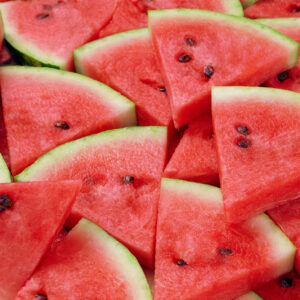Many of us see the dandelion as a pesky weed, but this plant is actually an herb with great medicinal properties. Dandelions are often spring’s first flowers, making them special for both their visual appeal and their role in our body’s spring cleaning process.
Spring cleaning is an irresistible urge that comes with the longer days, a time to sweep away the darkness of winter. Our bodies also feel this urge. During the winter, we tend to conserve energy and slow down. Evolutionarily speaking, we’re not as motivated to move. Our metabolism also slows down to save energy, food, and warmth, so our detox organs, such as the liver and kidneys, also become a little sluggish.
The desire to clean our homes can be seen as a reflection of what’s happening inside our bodies- we want to clear out the build-up from the winter. Dandelion comes in handy here as it helps the body get rid of stored metabolic wastes.
Benefits Of The Dandelion Plant
Dandelion is like a natural pharmacy; it is a great tonic for the liver and kidneys. It is also a diuretic which helps remove wastes quickly from the body. As a bitter herb, it stimulates the digestive system making you absorb nutrients more efficiently, thus generating less metabolic waste. This allows the liver to focus on important tasks such as getting rid of excess fat stores. In addition to that, like all early spring greens, dandelion leaves are packed with vitamins and minerals, something that is generally lacking in our diet during the winter.
Dandelion has a tonic effect on the body, and it also helps reduce inflammation in the liver. It is also rich in vitamins A, C, beta-carotene, potassium, iron, and copper, making it a great nutritional boost for the body after a winter of heavy meals. Dandelion acts as a tonic for the entire body and helps correct elimination issues such as constipation, gallstones, indigestion, sluggishness, and fatigue. It also helps with skin problems and may help manage diabetes by regulating blood sugar levels and lowering cholesterol.
You can add young dandelion greens to your salads or lightly steam or sauté them as soon as you spot them in your pesticide-free yard. If that’s not your preference, try making a tea. However, keep in mind that dandelion is a strong diuretic, which means it helps flush out waste and excess fluid from your body, making it great for relieving bloating. It is recommended to avoid consuming dandelion with other medications as it may flush out the drugs from your system. To avoid this, consume dandelion tea 30 minutes before to 1 hour after taking any drugs or medications. Always consult with your healthcare provider before taking any herbal supplements.
Harvesting Dandelions
When collecting dandelions, ensure they are located at least 100 yards from any road and haven’t been exposed to chemical fertilizers or pesticides. Additionally, make sure you have permission to take them if you’re not on your own property (In my experience, no one will begrudge you for picking their dandelions; in fact, people often call and request you to go to their house and gather them). Just take the young leaves – the older they are the more bitter they become. If the flower bud has already formed, cut the plant to the ground and wait for the new leaves to develop, then collect and cut it back again. This can be done a few times before the leaves get too bitter. Let a few flowers bloom as well, as they are beneficial for bees as well as for making different syrups and dandelion wine. You can harvest dandelion leaves and flowers any time through the growing season, but roots, which can be beneficial for the liver, should be taken after the first frost when the nutrients have been stored in the long taproot. After gathering, make sure to clean them thoroughly.
Below I’ve included one of my personal favorite recipes to make a deliciously sweet dandelion tea tonic. This tonic is enhanced with sweet orange and cinnamon, and one sip will have you saving this recipe to use again and again! Enjoy and remember not all weeds are created equal. The dandelion proves that!
Iced Dandelion Orange Tea Tonic
Prep Time: 20 minutes
Yeilds: 1 Serving
Ingredients:
1 teaspoon dried dandelion roots
1 tablespoon dried dandelion leaves
1 cup cold water
Zest of ½ orange
2 fresh oranges, juiced
½ tablespoon raw, unpasteurized honey, to taste
Large pinch cinnamon
Instructions
Place dandelion roots and water into a large saucepan, bring to a boil. Reduce to a simmer and add dandelion leaves. Simmer for 20 minutes, allow to cool, and add
orange zest, juice, and honey, stir gently. Refrigerate until completely chilled and serve dusted with cinnamon. During a liver detox, enjoy 2 cups per day without food! Enjoy!












